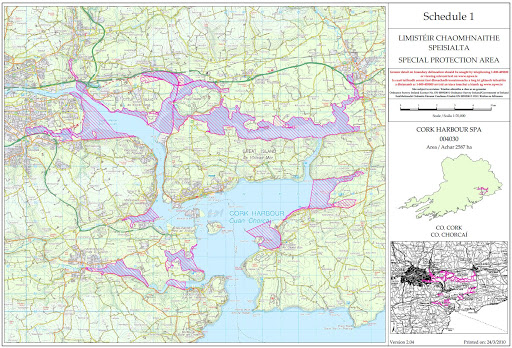
Novartis #Ringaskiddy operates two incinerators on site. One is a liquid vapour incinerator and the other is a solid waste incinerator. Both were installed to dispose of manufacturing waste generated on site. Heat recovered from the incinerators is used in the manufacturing process. But Novartis has reduced processing over the past couple of years and plans to reduce it yet further. As a result, there isn’t enough on-site waste being generated to power the incinerators and they have had to burn fossil fuels to generate the necessary heat to continue processing.
Novartis has recently lodged a planning application with Cork County Council seeking permission to accept liquid and solid hazardous wastes from other manufacturing sites around the country to burn in their on-site incinerators. The application says that this would supplement the waste lost by the reduced manufacturing, would allow a move away from the burning of virgin fossil fuel and would reduce hazardous waste currently exported from Ireland for treatment/disposal. It says the proposed wastes would be of a type similar to what is (or was) already on site and would therefore be suitable for burning in their incinerators. It also says that this move would help them sustain the Ringaskiddy operation.
I put considerable work into preparing a submission to this planning application. At face value, the logic of optimising existing under-used infrastructure makes perfect sense. However having been part of the 20-year campaign to keep merchant incineration out of Cork Harbour, I felt it was necessary that there would be crystal clear understanding of the proposed Novartis operation. You can read my submission at this link:
